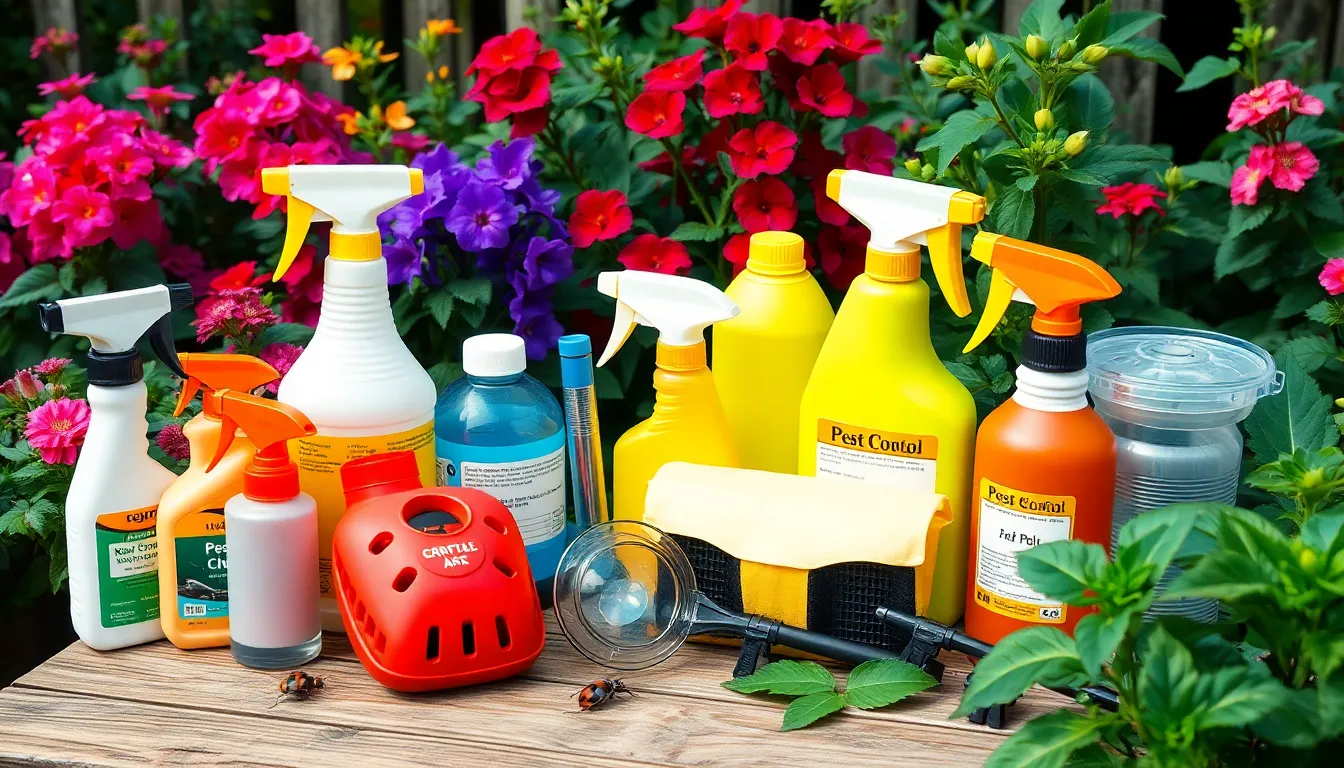| Category | Home & Garden |
| Link Type | Do Follow |
| Max Links Allowed | 2 |
| Domain Authority (DA) | 13 |
| Page Authority | 24 |
| Moz Rank | 2.4 |
| Links In | 129 |
| Equity | 97 |
| Google Indexed Pages | Check Indexed Pages |
| Sample Guest Post |
https://homeexpoevents.com/category/pest ... |
| Misc SEO Metrics |
BYPASSED: API unavailable - site approved based on URL validation only Processed without SEO metrics due to API service outage |
Pest control encompasses a range of techniques aimed at managing and eliminating unwanted pests. Effective methods tackle issues from ants in kitchens to mice in basements, ensuring a safer living environment. Integrated Pest Management, known as IPM, integrates multiple strategies, focusing on long-term prevention and control. Chemical methods, such as insecticides and rodenticides, provide immediate solutions but require careful handling.
Physical barriers, including traps and nets, prevent pests from entering homes. Homeowners often utilize natural remedies like diatomaceous earth or essential oils to deter insects without harsh chemicals. Regular maintenance, such as sealing cracks in walls and keeping food stored properly, helps reduce attractants.
Monitoring pest activity becomes crucial once a problem is identified. Trained pest control professionals assess infestations, guiding property owners toward effective treatments. Education about local pest species equips homeowners with knowledge to recognize early signs of infestation.
State regulations govern pest control practices, establishing safety standards for products and procedures. Ensuring compliance minimizes environmental impacts while protecting human health. Additionally, pest control services often feature ongoing assessments to prevent future occurrences.
Collaboration between homeowners and pest control experts facilitates successful pest management. Options for treatment selections emphasize individual preferences and circumstances. Understanding pest behavior enables the development of tailored strategies that address specific infestations. By prioritizing prevention measures alongside reactive treatments, households maintain comfort and safety.

Various pest control methods effectively manage and eliminate unwanted pests. These approaches include chemical, biological, cultural, and mechanical techniques.
Chemical pest control involves using synthetic substances to target and eliminate pests. Insecticides and herbicides serve as common examples. These chemicals disrupt pest growth or kill them upon contact. While effective, they require careful handling to minimize risks to health and the environment. Many products come with specific usage guidelines, emphasizing safety protocols and protective gear. It’s crucial to select chemicals approved by regulatory agencies to ensure safe usage.
Biological pest control uses natural organisms to reduce pest populations. Predators, parasites, and pathogens all play a role in this method. For instance, ladybugs feed on aphids, helping control their numbers. Introducing beneficial insects or microbes can create a balanced ecosystem. This strategy matures over time, requiring patience and observation. Effectiveness often relies on the natural pest’s life cycle and the area’s specific conditions.
Cultural pest control focuses on altering practices and environmental conditions to deter pests. Implementing crop rotation and proper sanitation reduces pest habitats. Selecting resistant plant varieties also minimizes pest attraction. Regular maintenance and good irrigation practices contribute to a healthier environment. These proactive steps enhance overall pest management and prevent infestations before they start.
Mechanical pest control employs physical barriers and traps to keep pests at bay. Common tools include traps, nets, and exclusion devices. This method requires no chemicals and poses minimal risk to humans and pets. For instance, using sticky traps efficiently captures insects without toxic substances. Prevention through sealing cracks and removing food sources further strengthens this approach. Regular monitoring ensures timely action when pests are detected.
Pest control plays a crucial role in maintaining a safe and comfortable home. Effective management of pests like ants and mice helps protect residents from health risks associated with infestations. Various pests carry diseases that can affect families and pets alike. For instance, rodents can transmit hantavirus and leptospirosis through their droppings and urine.
A proactive approach to pest management prevents structural damage to homes as well. Termites, if left unchecked, can cause significant destruction to wooden structures. By employing pest control strategies like regular inspections and preventative treatments, homeowners can mitigate these risks effectively.
Utilizing Integrated Pest Management techniques also emphasizes sustainable practices. IPM strategies focus on monitoring pest populations, identifying trouble spots, and applying the least toxic methods first. Each approach emphasizes long-term success rather than quick fixes, aligning with environmental safety goals.
Furthermore, adhering to state regulations on pest control ensures compliance and minimizes potential environmental impacts. Professionals trained in pest management understand specific local regulations, providing tailored solutions that meet safety standards.
Fostering collaboration between homeowners and pest control experts enhances the effectiveness of pest management. Regular communication about pest activity and treatments allows homeowners to take proactive steps. Together, they can address infestations promptly, ensuring a more comfortable living environment.
Prioritizing pest control creates healthier homes for everyone involved. It protects property, reduces health risks, and aligns with environmentally responsible practices. With proper methods and professional assistance, pest control remains essential for any household aiming for a pest-free experience.
Pests disrupt homes and affect comfort. Ants, rodents, termites, and bed bugs represent common nuisances that require effective management strategies.